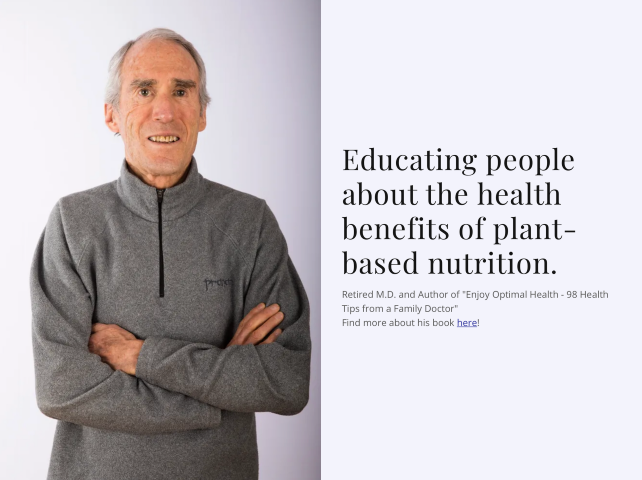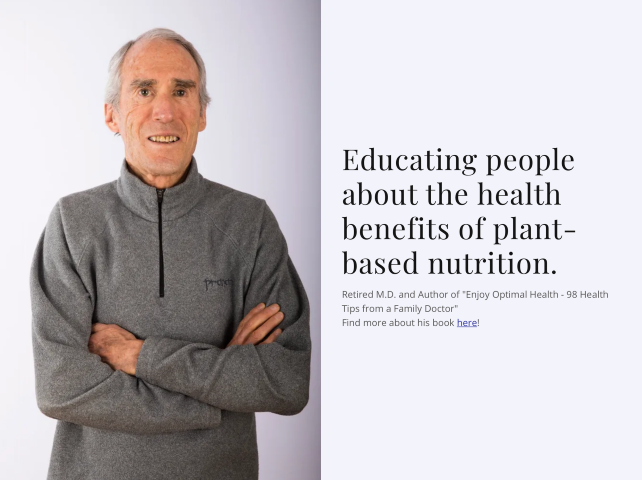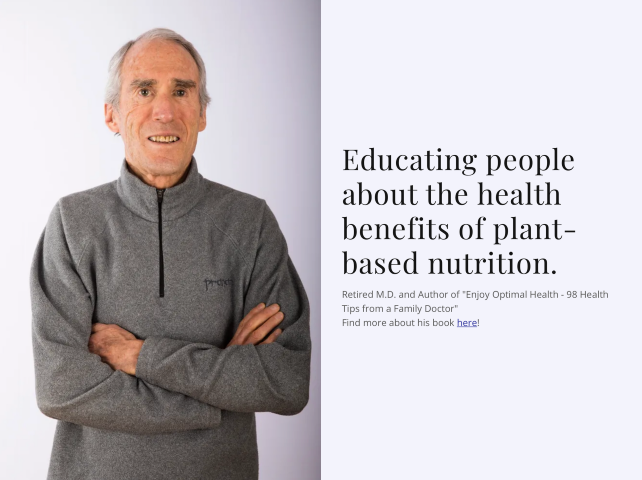Health column by Dr. Greg Feinsinger. Champion of Whole Food Plant Based Living and righteous person.
Stents are small, semi-rigid, tubular “cages” that are inserted into arteries to open blockages. They are primarily used for blockages in coronary (heart) arteries, but are sometimes used to unclog other arteries.
The information in this column is taken from a series of 5 short videos Dr. Michael Greger did recently on his website nutritionfacts.org, about unnecessary cardiac stenting in the U.S. He is a leading expert on evidence-based nutrition, but he and his staff sometimes review the scientific literature on other medical subjects. Additional information was obtained from the website www.curing heartdisease.com, after a phone call from its author, research scientist Peter Megdal, PhD, who recently reviewed the medical literature on stents and who phoned after reading the recent P.I. column on cholesterol online.
Stents can be lifesaving when used to open the sudden, complete blockages that cause heart attacks, and we’re fortunate to have this procedure available at Valley View Hospital. However, it has been evident for decades that stents for chronic partial blockages do not save lives or improve symptoms, compared to optimal medical management. In spite of this knowledge, a million cardiac stents are still inserted annually by interventional cardiologists in the U.S., including a record 34 stents inserted at one sitting in a patient. So, what’s going on? To understand, let’s first look at the cause of heart attacks—the number one cause of death in America.
Heart attacks are caused by clots that completely block blood flow in a coronary artery, when plaque (atherosclerosis, or “hardening of the arteries”) suddenly ruptures. The primary cause of atherosclerosis is what we eat. Other contributing factors are: obesity; sedentary lifestyle; hypertension; smoking; genetics; high cholesterol; prediabetes/diabetes; sleep apnea; stress; and inflammation.
When arteries are stressed by one or more of the above risk factors, the endothelium that lines our miles and miles of arteries thickens. Eventually cholesterol-laden plaque forms, 99 percent of which is in the walls of our arteries, not causing any blockage until it ruptures. Sometimes, slow-growing partial blockages occur, which often cause no symptoms, but which if severe enough can cause angina—chest pain when the heart is stressed by exertion.
Decades ago, before we knew that most heart attacks are caused by plaque in the walls of arteries that ruptures rather than by partial blockages, a whole industry developed to find blockages and try to fix them with stents or bypass surgery. This industry includes diagnostic tests such as cardiac stress tests with nuclear imaging, and cardiac cath labs capable of angiography—x-ray pictures of the coronary arteries, which show blockages but do not show arterial wall plaque. This multi-billion-dollars-a-year industry also includes hospitals, interventional cardiologists, cardiac surgeons, and the companies that make stents.
Stenting is an invasive procedure that can cause side effects, including a 1 percent risk of death. Non-fatal complications include a heart attack or stroke during the procedure, and there is imaging evidence of mini-strokes in 11-17 percent of people following stent procedures. Other complications include bleeding and damage to a coronary artery. Complications that can occur following the stent procedure include bleeding due to the blood thinners that must be taken for at least a few months postoperatively, and clogging of the stent, which can result in a heart attack. Then there’s the cost of the procedure, which is between 16 and 22,000 dollars.
Stents were invented in 1986 and approved by the FDA in 1992. Multiple studies over decades have shown that stents are not beneficial in settings other than an acute heart attack, which begs the question of why so many are still done—way more in the U.S. than any other developed country. Following are some of the reasons: 1) Lack of adequate informed patient consent--nine out of ten patients mistakenly think stents are going to improve symptoms, prevent a heart attack, and prolong their lives. In study done at the Cleveland Clinic, physicians were knowingly recorded while discussing possible complications from and alternatives to cardiac stenting (i.e. informed consent), only 2 out of 59 patients received appropriate information. 2) As so often is the case with American medicine, misplaced financial incentives are part of the problem. In contrast to many other developed countries, we have a fee for service system, where physicians get paid more for doing more procedures. 3) On average, there is a 17-year lag between when science tells us we need to change the way we practice medicine and when these changes are instituted—in this case the lag has been well over 17 years. 4) In the last 25 years, American medicine has become big business, and when so many players are making huge profits under the status quo, there is strong resistance to change.
A safer, less expensive, and just as effective alternative to stents is optimal medical management. This means getting weight, blood pressure, blood sugar, total cholesterol, and LDL (bad cholesterol) to goal. It also means regular aerobic exercise, stopping smoking, treating sleep apnea, getting rid of inflammation, and reducing stress. There is strong evidence that optimal diet is plant-based, whole food nutrition with no salt, sugar, or added oil, which Doctors Ornish and Esselstyn have shown can stabilize and reverse heart disease--partial blockages plus the 99 percent of the plaque that is in walls of arteries.



